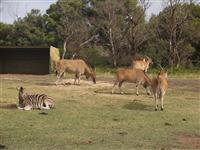
How do you get a career working in national parks or nature parks?
This is a growing area with many opportunities and in order to work in this field you need to develop an understanding of the natural environment and basic ecological principles, and learn a variety of skills ranging from basic gardening and nature park design, to erosion control, weed control and tree surgery. This course offers you those skills and knowledge.
A nature park is any area that aims to preserve a natural environment or natural plant or animal life. It includes the following:
- gazetted wilderness areas such as a national park
- wildlife reserves
- forest reserves
- zoos and wildlife parks
- botanical reserves
- council parks
- recreation reserves